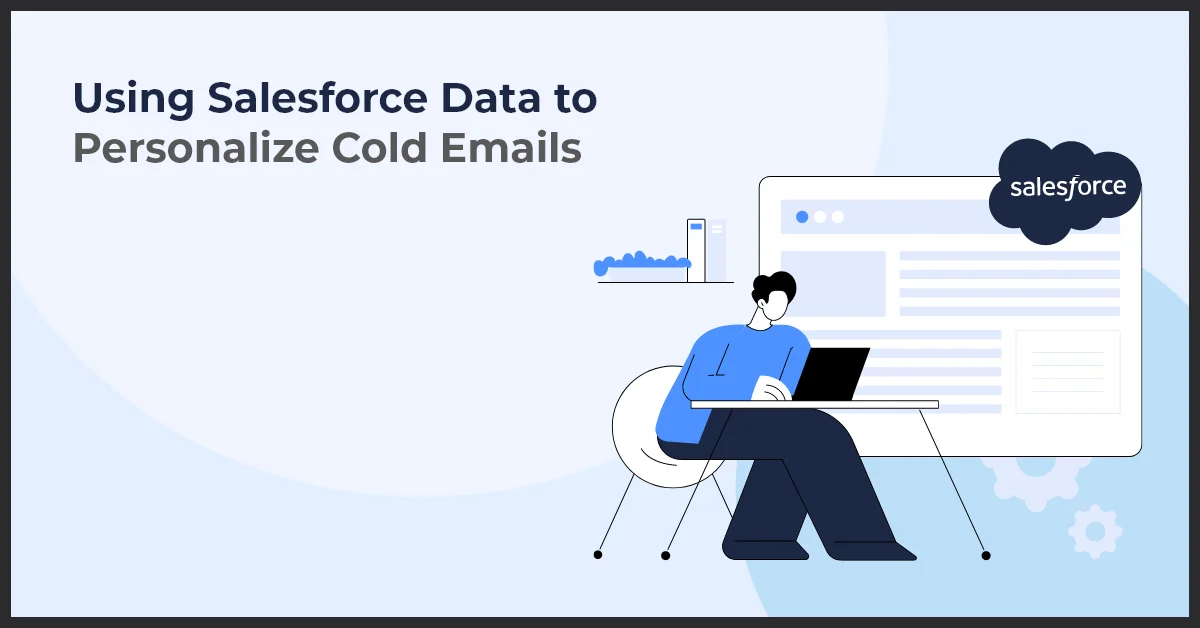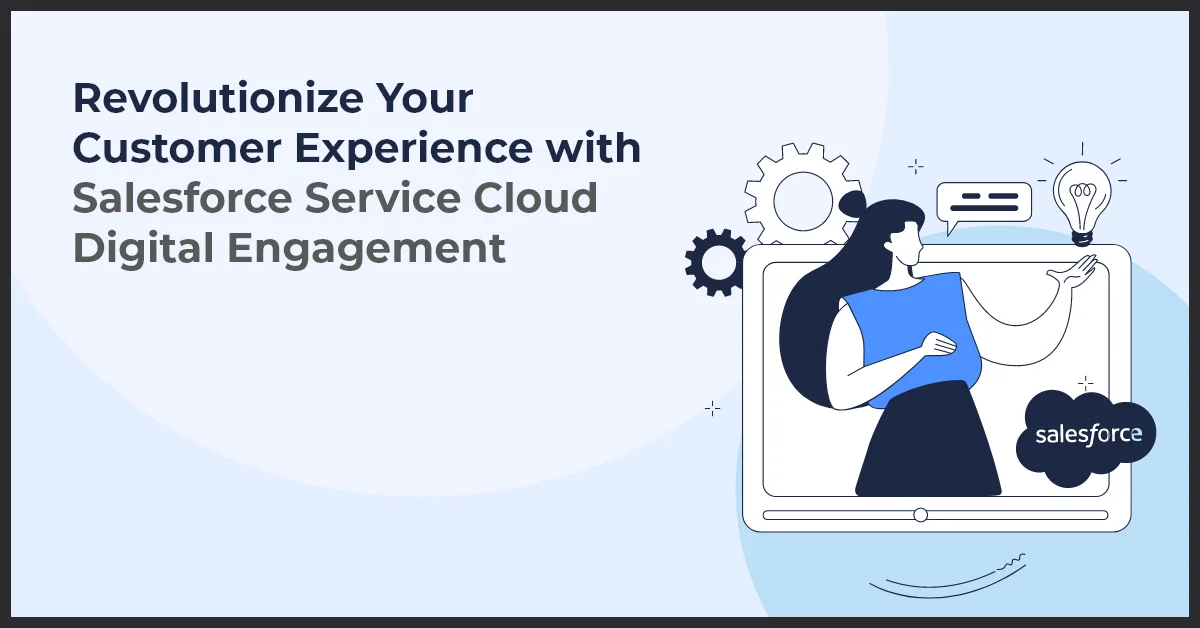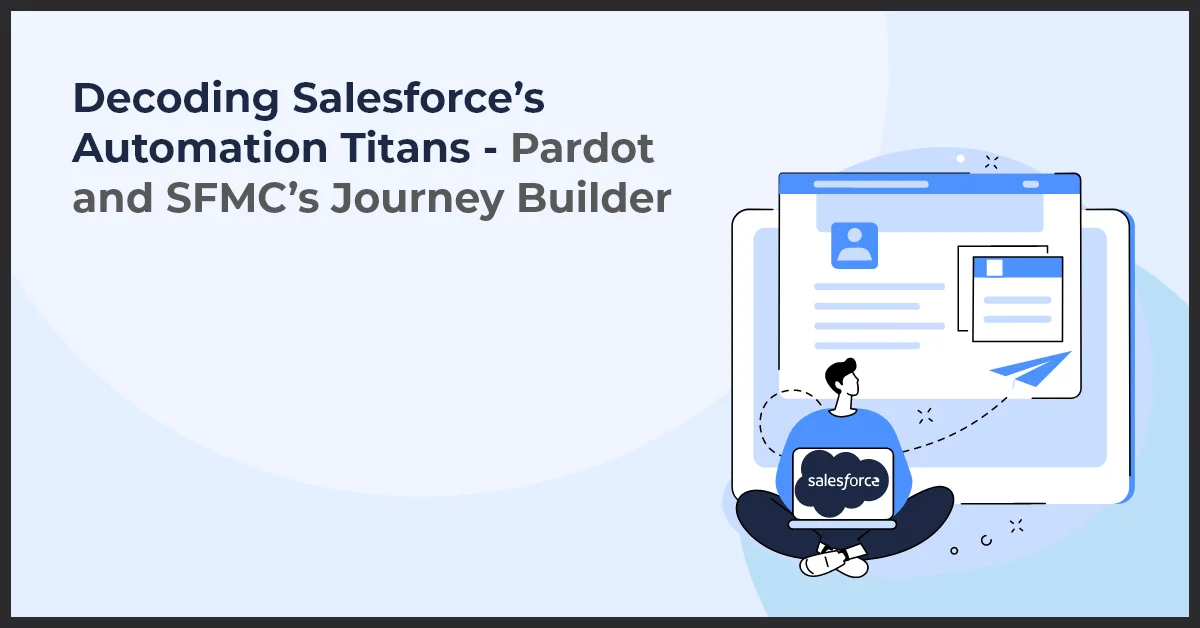Unlock the Power of Salesforce with Expert Development Services

Published on: November 15, 2023
Updated on: April 09, 2024
521 Views
- Salesforce
16 min read
Discover how Salesforce development services can revolutionize your business and supercharge your growth. In this comprehensive guide, we will delve into the definition, importance, and countless benefits of Salesforce development services. Whether you are a small start-up or a large enterprise, harnessing the capabilities of Salesforce can significantly impact your sales, customer relationships, and overall success.
Throughout this content, we will explore key topics such as:
- The role of Salesforce development services in streamlining business processes and enhancing productivity
- Customization and integration options available to tailor Salesforce to your unique business needs
- Building scalable and flexible applications on the Salesforce platform
- Maximizing customer engagement and revenue growth through marketing automation and analytics
- The importance of ongoing support and maintenance for optimal performance
Get ready to unleash the full potential of Salesforce and take your business to new heights with our expert Salesforce development services.
Salesforce Platform
When it comes to Salesforce development, understanding the Salesforce platform is crucial. The platform provides a robust foundation for building and customizing applications, allowing businesses to unleash the full potential of their Salesforce org.
Key features, functionalities, and capabilities of the Salesforce platform empower developers to create innovative solutions tailored to specific business needs. With powerful tools and resources at their disposal, developers can transform ideas into reality.
The Salesforce platform enables developers to build custom applications and solutions that integrate seamlessly with existing Salesforce functionalities. Whether it's developing a custom customer relationship management (CRM) solution or creating a bespoke app for a specific business process, the platform offers flexibility and scalability.
Utilizing the Salesforce platform allows businesses to streamline operations and enhance productivity. With a wide range of tools and resources available, developers can implement automation, workflows, and other advanced functionalities to improve efficiency.
Moreover, the platform also supports the development of mobile apps, allowing businesses to engage with their customers and employees on the go. By leveraging mobile capabilities, developers can create mobile-friendly interfaces and optimize user experiences.
The Salesforce platform is a comprehensive development platform that empowers businesses to build customized applications and solutions. It offers a wide array of features, functionalities, and capabilities that enable developers to create innovative solutions, streamline operations, and enhance productivity.
Apex Programming Language
Apex is a powerful and versatile programming language designed specifically for Salesforce development. It is a strongly typed, object-oriented language that allows developers to build customized applications, triggers, and business logic within the Salesforce platform. With its similarities to the Java programming language, Apex is easy to learn and use for developers familiar with Java or C#.
Understanding and utilizing Apex is essential for Salesforce developers to create solutions that meet the unique business requirements of organizations. Apex enables developers to perform complex calculations, execute flow and transaction control statements, and interact with Salesforce data and metadata.
Here are some examples of how Apex is used in Salesforce development:
- Building Customized Applications: Apex allows developers to create custom user interfaces, automate business processes, and extend the functionality of Salesforce to meet specific business needs.
- Creating Triggers: Triggers are pieces of code that execute before or after specific data manipulation events, such as inserting, updating, or deleting records. Apex triggers enable developers to enforce complex business rules and automate data processing.
- Implementing Business Logic: Apex helps developers implement complex business rules and validations, ensuring data integrity and enforcing security requirements within Salesforce.
Apex is not only a powerful programming language, but it also integrates seamlessly with other Salesforce features and technologies, such as Visualforce and Lightning Components. This integration enables developers to create comprehensive applications and solutions that leverage the full capabilities of the Salesforce platform.
Customization and Configuration
Customization and configuration play a crucial role in Salesforce development services. They allow businesses to tailor Salesforce CRM to meet their unique requirements and streamline their processes. By customizing and configuring Salesforce, companies can enhance their sales, marketing, and customer service strategies, leading to improved productivity and customer satisfaction.
Importance of customization and configuration in Salesforce development services
Customization involves making changes to the standard Salesforce functionality to align the CRM system with the business needs. It allows businesses to capture specific data, automate processes, and generate insights that are relevant to their industry and target audience. Configuration, on the other hand, refers to setting up and adapting Salesforce features without altering the underlying code.
Customization and configuration are crucial because:
- They enable businesses to create custom objects, fields, and workflows, empowering them to manage and organize their data effectively.
- By implementing business processes specific to their requirements, companies can improve collaboration, decision-making, and overall efficiency.
- Customization and configuration provide businesses with flexibility, allowing them to adapt Salesforce CRM as their needs and strategies evolve over time.
Creating custom objects, fields, workflows, and implementing business processes specific to client requirements
Salesforce offers a robust customization framework that enables businesses to create custom objects and fields to capture unique data points. This flexibility allows organizations to track and analyze data specific to their industry, ensuring that they have a comprehensive understanding of their customers and prospects.
In addition to custom objects and fields, Salesforce also provides workflows and automation tools. These features allow businesses to automate repetitive tasks, streamline approval processes, and ensure data integrity. By creating workflows, companies can closely align their CRM system with their existing business processes, improving efficiency and reducing manual errors.
Best practices for customizing and configuring Salesforce CRM
When customizing and configuring Salesforce CRM, it is important to follow best practices to ensure a smooth implementation and maintain system stability. Some key best practices include:
- Clearly defining requirements: Clearly define your customization and configuration requirements based on your business goals and processes.
- Using standard functionality: Make use of standard Salesforce functionality before opting for customization.
- Considering scalability: Ensure that your customization and configuration design can accommodate future growth and changes.
- Testing comprehensively: Thoroughly test your customization and configuration changes to identify any issues before deploying them to production.
- Documenting changes: Keep detailed documentation of your customization and configuration changes for easier troubleshooting and future reference.
By following these best practices, businesses can optimize their Salesforce CRM to meet their unique requirements and drive success.
Lightning Framework
The Salesforce Lightning framework is an advanced development platform that allows developers to build modern and interactive web applications on the Salesforce platform. With its powerful features and intuitive interface, Lightning enables developers to create highly personalized and visually appealing user experiences.
Overview of Salesforce Lightning framework
Salesforce Lightning framework is a component-based architecture that streamlines the development process by providing reusable building blocks. These components are designed to be flexible and can be easily combined to create complex applications.
Lightning framework also includes Lightning Web Components, which are a set of standards-based components that use modern web standards like JavaScript and HTML. This allows developers to leverage their existing skills and tools to build Lightning components.
Advantages of using Lightning for developing web applications on the Salesforce platform
- Enhanced User Experience: Lightning offers a seamless and interactive user experience with its rich set of pre-built components and tools. Developers can leverage these components to create visually appealing and intuitive interfaces, resulting in increased user satisfaction.
- Improved Productivity: Lightning provides developers with a set of tools and features that accelerate the development process. The component-based architecture allows for easy reuse of code, reducing the time and effort required to build applications.
- Mobile Optimization: Lightning is designed to be mobile-first, ensuring that applications built using Lightning are responsive and optimized for various devices. This enables users to access the applications on the go, enhancing their productivity and flexibility.
Utilizing pre-built components and tools in Lightning for visually appealing user interfaces
One of the key advantages of using Lightning is the availability of a vast library of pre-built components and tools. These components can be easily customized and combined to create visually appealing and user-friendly interfaces.
Developers can leverage these components to add functionalities like charts, calendars, dropdown menus, and more to their applications without having to build them from scratch. This not only saves development time but also ensures consistency and uniformity across different applications.
Integration and Data Migration
Integrating Salesforce with external systems and migrating data from legacy systems are crucial aspects of Salesforce development services. These processes ensure seamless data transfer and synchronization, enabling businesses to harness the full potential of Salesforce.
Understanding the Integration Methods
When integrating Salesforce with external systems, various methods can be used depending on the specific requirements. Salesforce offers a range of integration options, including:
- SOAP and REST APIs: These APIs allow for real-time integration and data exchange with external systems.
- Middleware Platforms: Middleware tools like MuleSoft, Dell Boomi, and Informatica facilitate integration between Salesforce and other enterprise systems.
- Real-time Streaming APIs: These APIs enable the delivery of real-time data changes from Salesforce to external systems.
- Outbound Messaging: Salesforce can automatically send data change notifications to external systems through outbound messages.
By understanding the available integration methods, Salesforce developers can select the most suitable approach for their integration projects, ensuring seamless connectivity with external systems.
Data Migration from Legacy Systems
Migrating data from legacy systems into Salesforce is a critical step in leveraging the platform's capabilities. It involves transferring data from existing systems, ensuring its accuracy, and mapping it to the appropriate Salesforce objects and fields.
During the data migration process, Salesforce developers employ various techniques, such as:
- Data Extraction: Extracting data from legacy systems using tools like Informatica, Talend, or custom scripts.
- Data Cleansing: Ensuring data quality by identifying and resolving any data inconsistencies, duplicates, or errors.
- Data Transformation: Converting data formats, merging data from multiple sources, and transforming data to match Salesforce object structures.
- Data Load: Loading migrated data into Salesforce using data loader tools, DataLoader.io, or the Salesforce API.
Ensuring Seamless Data Transfer and Synchronization
During integration and data migration, it is crucial to ensure that data is transferred and synchronized seamlessly between Salesforce and external systems. This requires careful planning, error handling mechanisms, and data validation procedures.
Salesforce developers implement various techniques to achieve seamless data transfer and synchronization:
- Real-time Data Integration: Implementing real-time integration solutions where data is synchronized instantly between Salesforce and external systems.
- Batch Processing: Designing batch processes to transfer data in regular intervals to minimize performance impact and ensure data consistency.
- Data Validation and Error Handling: Implementing validation rules and error handling mechanisms to identify any data errors or inconsistencies during the integration process.
- Data Mapping and Transformation: Mapping data fields between Salesforce and external systems, and performing necessary transformations to match data structures.
By ensuring seamless data transfer and synchronization, businesses can utilize Salesforce's full potential and streamline their operations.
AppExchange and Third-Party Apps
Introduction to Salesforce AppExchange
The Salesforce AppExchange is the world's leading enterprise cloud marketplace that allows businesses to extend the functionality of their Salesforce platform with a vast selection of pre-built third-party apps and components. With over 5,000 apps and solutions available, companies can easily find and install ready-to-use tools that meet their specific requirements.
Leveraging third-party apps and solutions for comprehensive Salesforce development services
By incorporating third-party apps and solutions from the AppExchange, businesses can enhance their Salesforce development services by quickly implementing powerful features and functionalities without the need for custom development. This allows organizations to save time and resources while accelerating their innovation cycles.
How to integrate and utilize third-party apps within the Salesforce platform
Integrating and utilizing third-party apps within the Salesforce platform is a straightforward process. Businesses can browse through the extensive catalog of apps available on the AppExchange and select the ones that align with their specific needs. Once an app is chosen, it can be easily installed and configured within the Salesforce environment, seamlessly integrating with existing workflows and data.
Once installed, these third-party apps can be accessed directly from the Salesforce interface, providing users with a unified experience. The data exchanged between Salesforce and the app is synchronized in real-time, ensuring accurate and up-to-date information across all systems.
Furthermore, third-party apps often come with advanced reporting and analytics capabilities, allowing businesses to gain valuable insights and make data-driven decisions. With the AppExchange, companies can leverage the power of ready-to-use solutions to boost productivity, streamline processes, and achieve their business goals.
Testing and Deployment
As an essential part of Salesforce development services, testing plays a crucial role in ensuring the quality and reliability of your applications. By implementing thorough testing practices, you can identify and fix any issues before deploying your code changes to the production environment.
Importance of testing in Salesforce development services
Testing is vital during the Salesforce development process to validate the functionality, performance, and security of your applications. It helps uncover any bugs or errors in the code, ensuring a smooth user experience and minimizing the risk of data corruption or loss.
Implementation of unit tests and test automation
Unit tests are crucial for verifying the correctness of individual components within your Salesforce applications. By writing comprehensive unit tests, you can validate the expected behavior of your code and identify any vulnerabilities or defects.
Test automation, on the other hand, enables you to automate the testing process, significantly reducing manual effort and saving time. It allows you to run tests automatically whenever changes are made to your code, ensuring consistent and reliable results.
Best practices for safe deployment of code changes
When deploying code changes from the sandbox to the production environment, it is essential to follow best practices to ensure a safe and seamless deployment process. Here are a few key recommendations:
- Version Control: Use a version control system to track and manage changes to your code, enabling you to easily revert back to previous versions if necessary.
- Sandbox Testing: Thoroughly test your code changes in the sandbox environment before deploying to production. This helps identify any issues and ensures that your applications function as intended.
- Deployment Plans: Develop detailed deployment plans that outline the steps and dependencies involved in the deployment process. This helps minimize the risk of errors and ensures a smooth transition.
- Change Sets or Version Control Tools: Utilize change sets or version control tools to package and deploy your code changes. These tools provide a structured and controlled approach to deploying changes and help avoid any unintended consequences.
- Rollback Strategy: Have a rollback strategy in place in case any issues arise during deployment. This ensures that you can quickly revert back to the previous working state if necessary.
By following these best practices, you can minimize the chances of deployment failures and ensure a seamless transition of code changes from the sandbox environment to production.
Security and Permissions
When it comes to Salesforce development services, ensuring the security and permissions of your system is of paramount importance. Let's explore how you can efficiently manage user permissions, access controls, and data security within Salesforce.
Managing User Permissions
Controlling user access to specific functionalities or data is crucial in maintaining the integrity of your Salesforce platform. With Salesforce development services, you can easily define permission sets and roles to regulate user access.
By leveraging Salesforce's user management tools, you can assign different levels of access to various roles within your organization. This allows you to ensure that only authorized personnel have access to sensitive data and critical functionalities.
Designing and Implementing Robust Security Measures
Your Salesforce platform holds valuable data, and protecting it against potential threats is essential. With Salesforce development services, you can design and implement robust security measures to safeguard sensitive information.
By configuring field-level security, you can restrict access to specific data based on user roles. You can also implement object-level security, ensuring that unauthorized users cannot view or modify sensitive records. Additionally, you can enable encryption to further enhance data protection.
Ensuring Compliance with Relevant Regulations
Regulatory compliance is a critical aspect of Salesforce development services, especially in industries with strict data protection regulations. Salesforce offers a range of compliance certifications, including HIPAA, GDPR, and ISO 27001, among others.
By working with a Salesforce development services provider, you can ensure that your system adheres to the necessary regulations and standards. This includes implementing appropriate data handling processes, privacy controls, and security measures to meet compliance requirements.
With the right approach to security and permissions, you can confidently utilize Salesforce development services to enhance your organization's data protection measures and ensure compliance with relevant regulations.
Continuous Improvement and Best Practices
As a Salesforce development services provider, it is crucial to stay up to date with new features, updates, and best practices in Salesforce development. Salesforce continuously introduces new tools and functionalities that can enhance the development process and improve the overall Salesforce experience for users.
By keeping up with these updates, developers can leverage the latest capabilities to build more efficient and robust applications. It is essential to regularly explore the Salesforce Trailhead platform, attend webinars, and participate in user groups to stay informed about the latest trends and techniques in Salesforce development.
In addition to staying updated, following industry standards and architectural patterns for Salesforce development ensures the consistency and maintainability of applications. By adhering to these guidelines, developers can create scalable and reliable solutions that align with best practices recognized by the Salesforce community.
Optimizing the performance and scalability of Salesforce applications is another crucial aspect of continuous improvement. Salesforce provides various tools and techniques to monitor and enhance application performance. It is essential to conduct regular performance audits, identify bottlenecks, and optimize code and configuration to ensure optimal responsiveness and usability.
Troubleshooting and Support
When it comes to Salesforce development services, providing technical support and troubleshooting assistance is crucial for ensuring smooth operations. Our team of experts is dedicated to helping you overcome any obstacles that may arise during the development process.
Our services include:
- Identifying and resolving technical issues and bugs: Our experienced developers have extensive knowledge in troubleshooting and debugging Salesforce applications. We can quickly pinpoint and address any issues that may be affecting the performance of your Salesforce platform.
- Common challenges faced by developers: Salesforce development projects can often pose challenges, such as integration complexities, data migration issues, or code customization problems. Our team is well-versed in these common challenges and can provide effective solutions to ensure your project progresses smoothly.
With our troubleshooting and support services, you can have peace of mind knowing that any technical issues that arise will be swiftly handled by our team of experts. We are committed to delivering reliable and efficient Salesforce development services.
Conclusion
Salesforce development services play a vital role in the success of enterprises. By leveraging the power of the Salesforce CRM platform, businesses can streamline their processes, improve efficiency, and enhance customer relationships. Customized solutions and implementation of Salesforce CRM provide clients with numerous benefits.
Clients can experience improved data management, automated workflows, personalized customer experiences, and actionable insights. Salesforce development services empower enterprises to stay ahead in the highly competitive market by aligning their operations with industry best practices.
In conclusion, Salesforce development services are essential for enterprises looking to optimize their business processes, drive growth, and achieve their goals. By partnering with a reliable Salesforce development service provider, businesses can unlock the full potential of the Salesforce CRM platform and gain a competitive edge in their respective industries.



